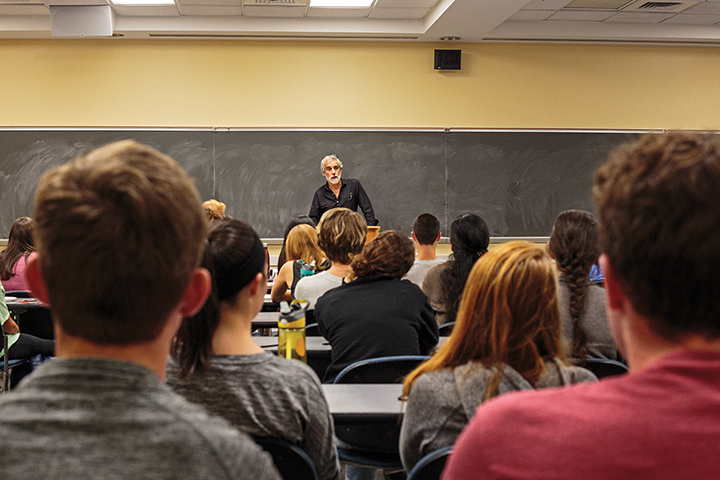By Ashley O’Connor
For The Diamondback
Jamie Kalven, a journalist and human rights activist, discussed institutional racism and gave advice to University of Maryland students trying to report on it.
More than 60 students filled the Cambridge Community Center on Wednesday to hear from Kalven, a freelance reporter based in Chicago who most-famously reported on the fatal shooting of 17-year-old Laquan McDonald by a policeman in 2014.
Chicago has dealt with several racially charged police shootings in the past few years, Kalven said, but while what’s happening there might look like a crisis, it’s actually the norm.
In Baltimore, the death of 25-year-old Freddie Gray in police custody sparked rioting in April 2015. Since then, many other black men have been killed by police, igniting protests across America.
“A curtain is being drawn back on conditions of structural violence,” Kalven said. “We’re not looking at a malfunction of a functioning society.”
Police-involved shootings across the country are bringing more awareness to a systematic issue, he said.
“That opportunity is a hand, but it’s a heavy lift,” he said. “We’re talking about becoming a different kind of society, a more humane, honest, accountable one.”
Kalven spoke about the relevance of video during these kinds of violent incidents.
“They break through into our moral imaginations,” he said. “They provide a window into the institutional conditions that allowed these atrocities.”
In November 2015, a county judge ordered the city to release the police dashcam video of the McDonald shooting. It shows the teenager walking down the street with a knife in his hand, and moving away after Officer Jason Van Dyke got out of the car. Within seconds of arriving on the scene, Van Dyke began firing his gun.
In all, he shot McDonald 16 times. Kalven was first to have the autopsy report that described where those 16 bullets were fired.
Kalven described it as a “political earthquake,” when the video was released. Van Dyke was indicted on six counts of first-degree murder and one count of official misconduct.
The video showed what actually happened to McDonald, Kalven said. And it’s had that effect during other police-involved shootings.
In Baltimore, a bystander also caught video of Freddie Gray’s arrest on his cellphone. When Eric Garner died after being put in an officer’s illegal chokehold, someone also recorded the incident on video.
Kalven said this videography can sometimes have a negative effect.
“There is an almost pornographic danger, the eyes of those horrified aren’t the only ones watching,” he said.
Kalven encouraged aspiring journalists to reevaluate their own perspectives in the face of foundational biases.
Freshman criminology major Heather DeMocker said she attended the event because she’s interested in civil rights issues and mass incarceration.
“What struck me the most was when he said ‘live in truth, with a lower-case T’,” she said. “Don’t be okay with the little things that you know are wrong because it’ll continue to escalate.”
Kalven spent his early career in a poverty stricken area of Chicago where he said he immersed himself in the lives of vulnerable people. It’s life-changing to experience how others live, he said, and said it is important for aspiring journalists to do the same.
“We put up fences to keep us safe,” Kalven said, “and those fences impoverish what they close and they’re also impoverishing for us.”
Freshman communications major Juliette Ducasse said she valued his point of view.
“It was interesting to see his perspective on what it’s really like to be around drug dealers and people like that,” she said, “not just what the news portrays them as.”



